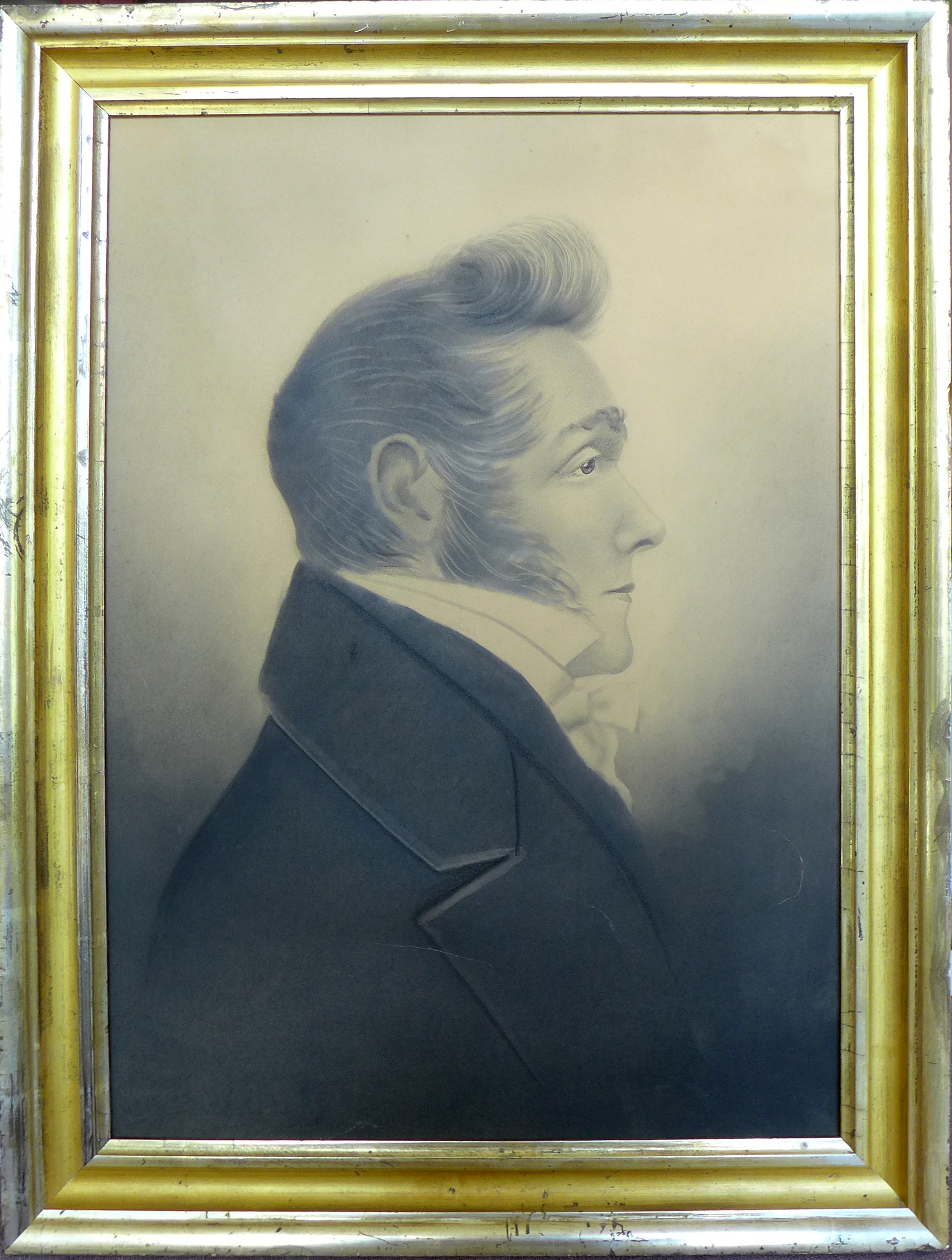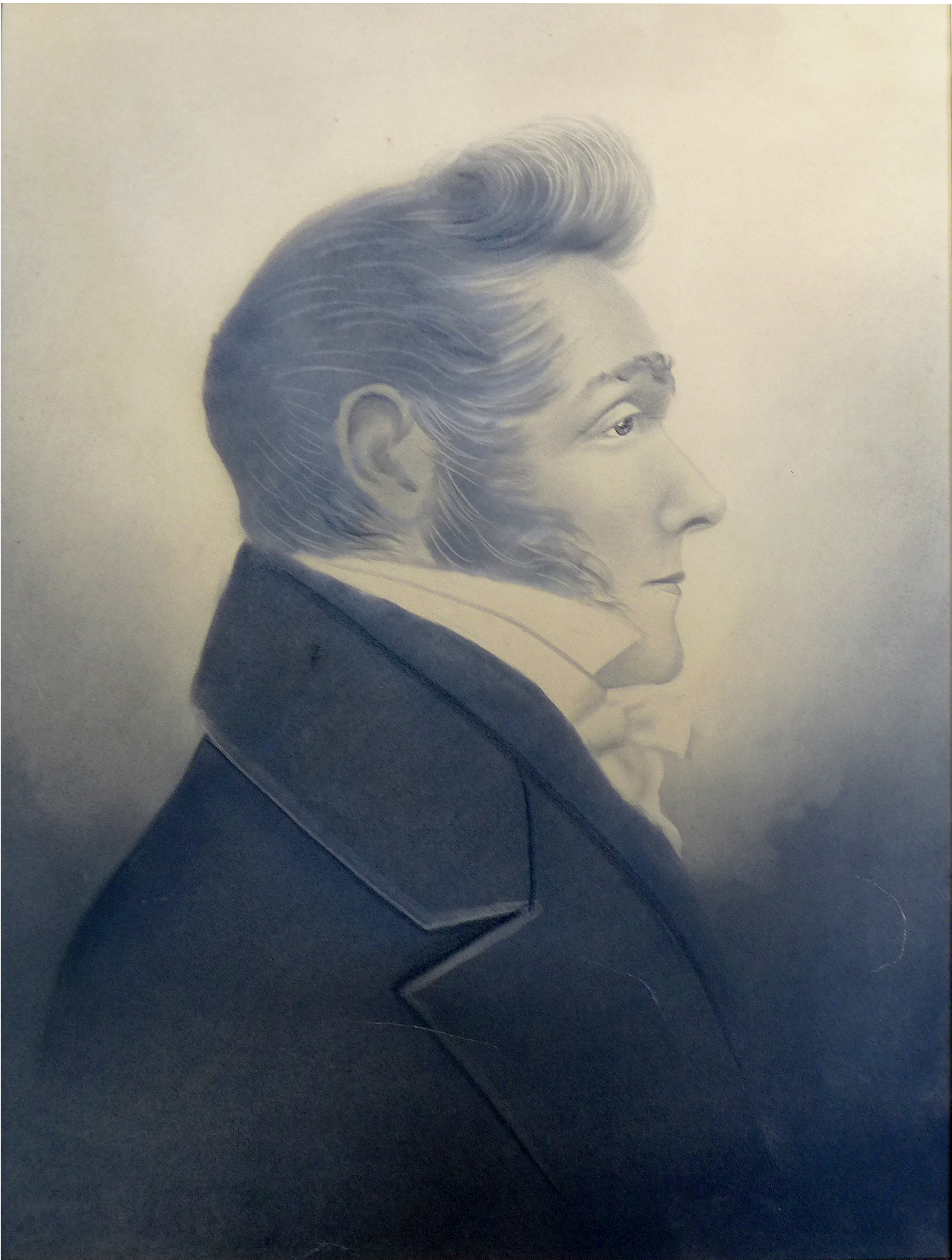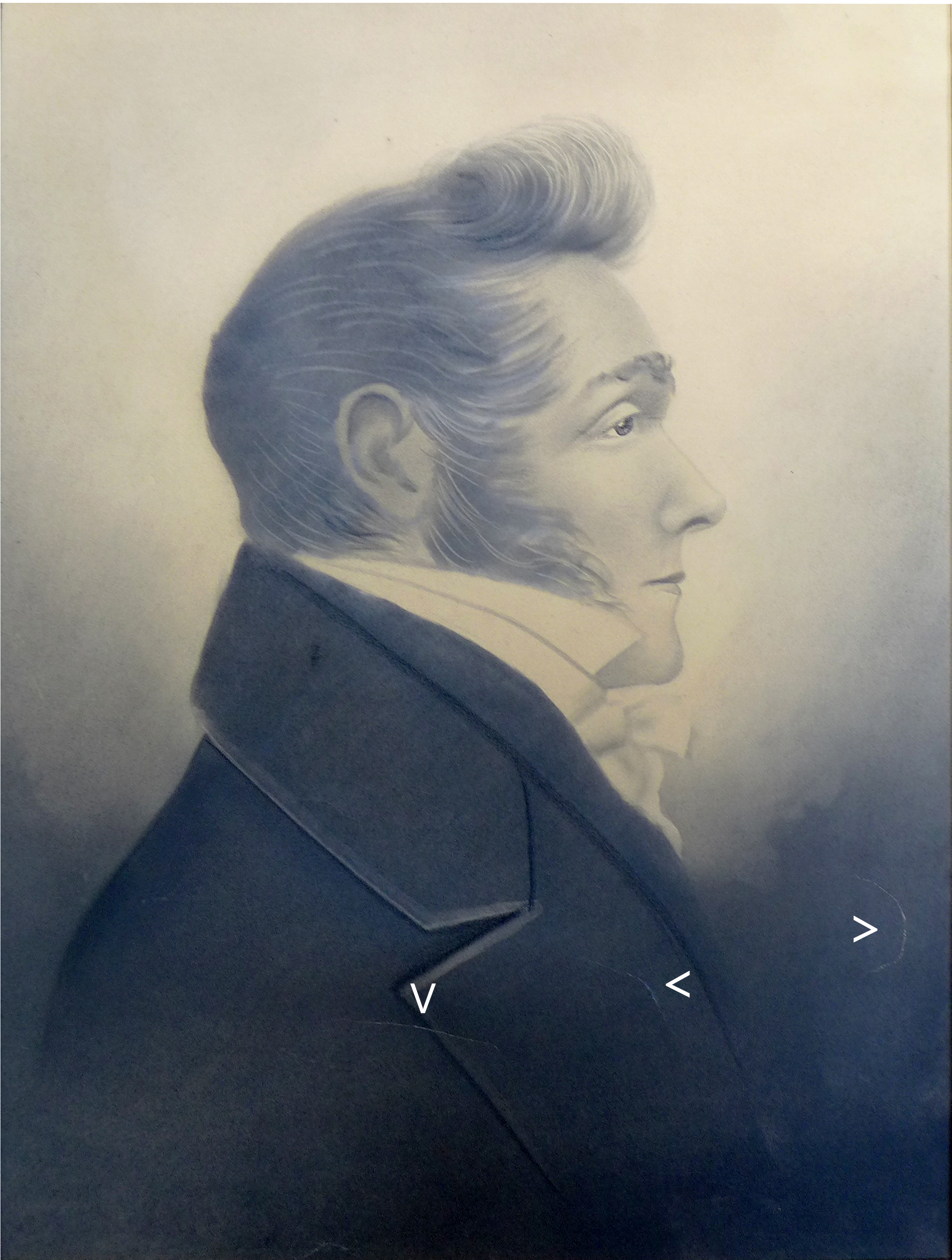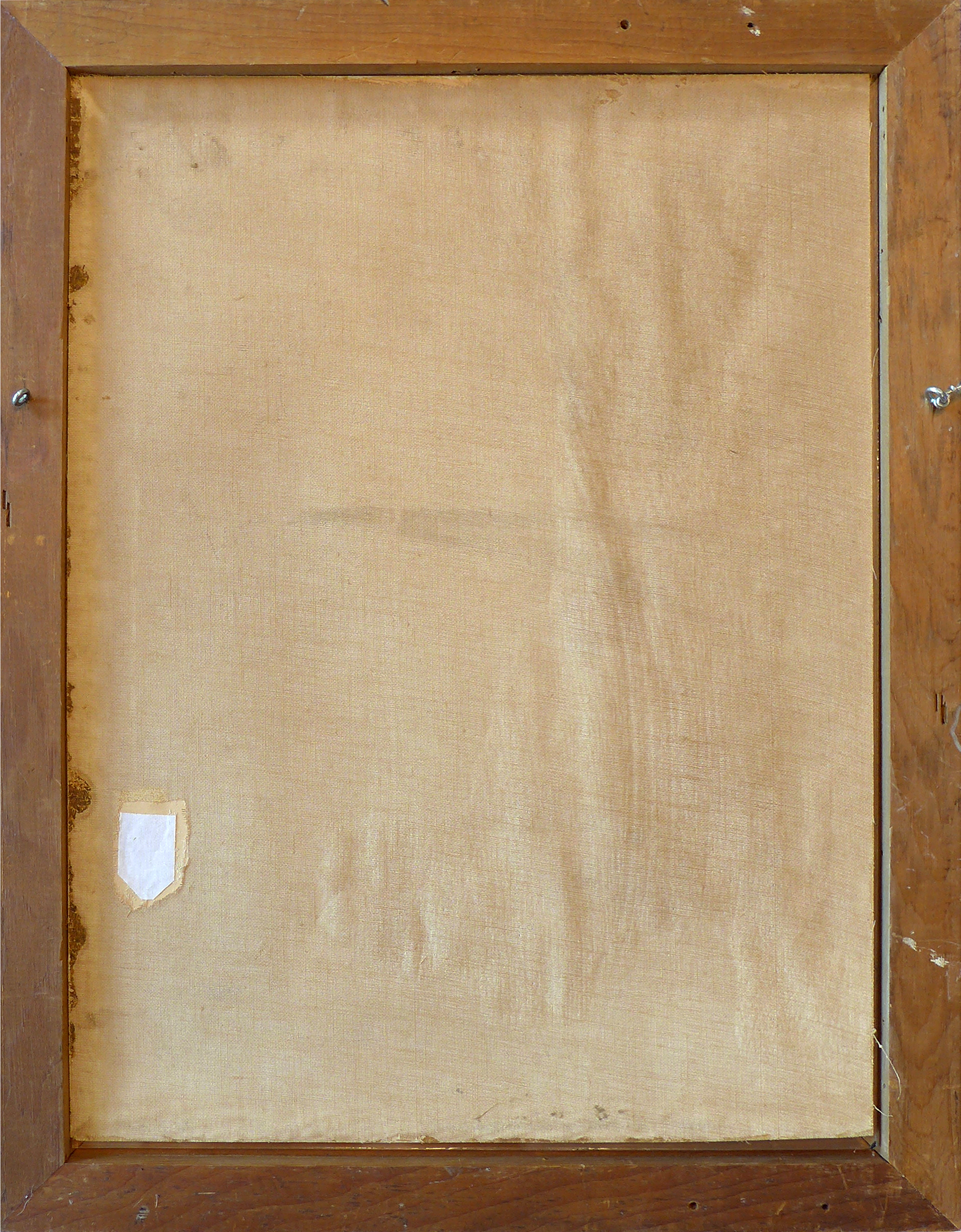
This is a rare example of the chalk work that was made popular at the end of the 18th and beginning of the 19th centuries by Charles Balthazar Julien Févret de Saint-Mémin. We find enough differences in Saint-Mémin’s work that we have to give up on hope that it is by him. We feel sure, however, that it was done by a contemporary of his—possibly a student. Almost life-size, the outline of our sitter was drawn in pencil by physiognotrace. For those not familiar with physiognotrace, it was merely a machine that allowed the artist to trace the sitters profile to paper. Silhouettists used it in conjunction with a pantograph which allowed the drawn profile to be reduced in size. Saint-Mémin and his contemporaries liked to draw life-size monotone (aka en grisaille) portraits. Like Saint-Mémin, this artist covered the paper with a pinkish wash, undoubtedly made of water, white chalk and a tiny bit of red pigment. This method of preparing the paper produced a smooth surface for drawing. Over the centuries, the wash on these papers have faded to very pale pink, a deep rose, and sometimes light grey. The paper of this drawing is grey with a pinkish tint. The chalk artists in the New Republic usually found it necessary to lay the prepared paper on either fabric, a wood stretcher, or both. This allowed the drawing to be moved about without touching and smearing the chalk. The paper of this drawing is laid onto its original fabric. The fabric may have been laid onto a stretcher, possibly the fabric was larger than the paper so it could be removed without cutting the paper. If this drawing had a stretcher, it is gone. The fabric is cut to the size of the paper and it is evident that this drawing has not been cut down.
Also, like Saint-Mémin, this artist carefully but quickly depicted the sitter’s hair with black and white shaded lines. All of the facial features are very clearly and beautifully executed. There are so many of the same characteristics but looking at the piece critically, there are subtle differences that say it is not by Saint-Mémin. We are happy to discuss the comparison in detail if you like. There are too many details to go into in this listing.
The drawing stands on its own. The man is handsome and his likeness is exquisite. His hairstyle and clothing date the drawing to circa 1810. There is a repaired paper tear near the right edge at about 4 o’clock. It has been repaired from the reverse of the fabric backing with archival linen tape. There are two scratches in his jacket. The last photo in the listing has arrows pointing to the tear and two scratches. These apologies are so minor, we didn’t see them until we unframed the gent to make sure he was mounted properly. We are happy to say that an owner before us had accomplished the framing with conservation in mind. He resides in a beautiful period gilt frame measuring 22 ¾” x 17 3/8” with a sight size of 19” x 13 ½”.
#6813 SOLD



